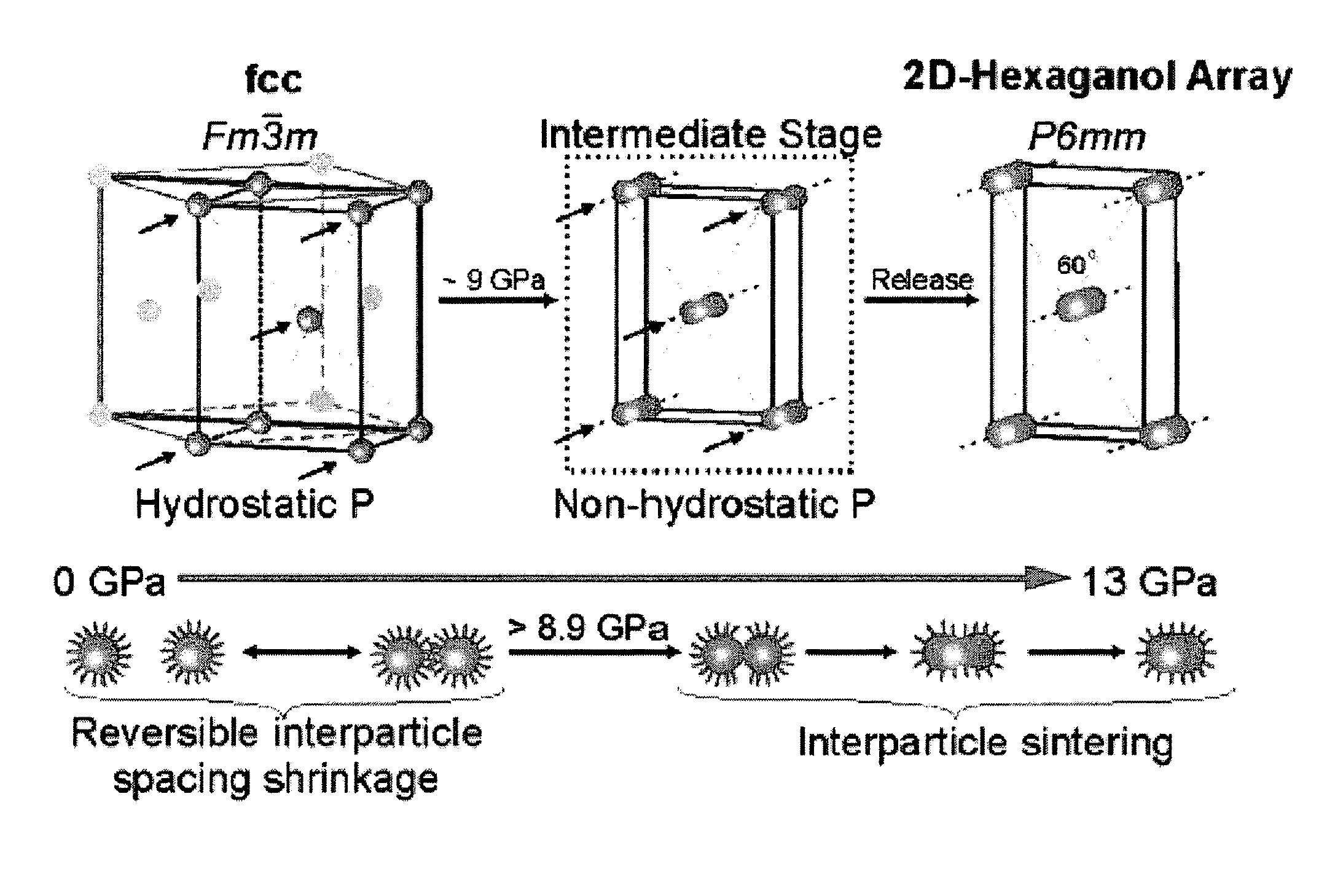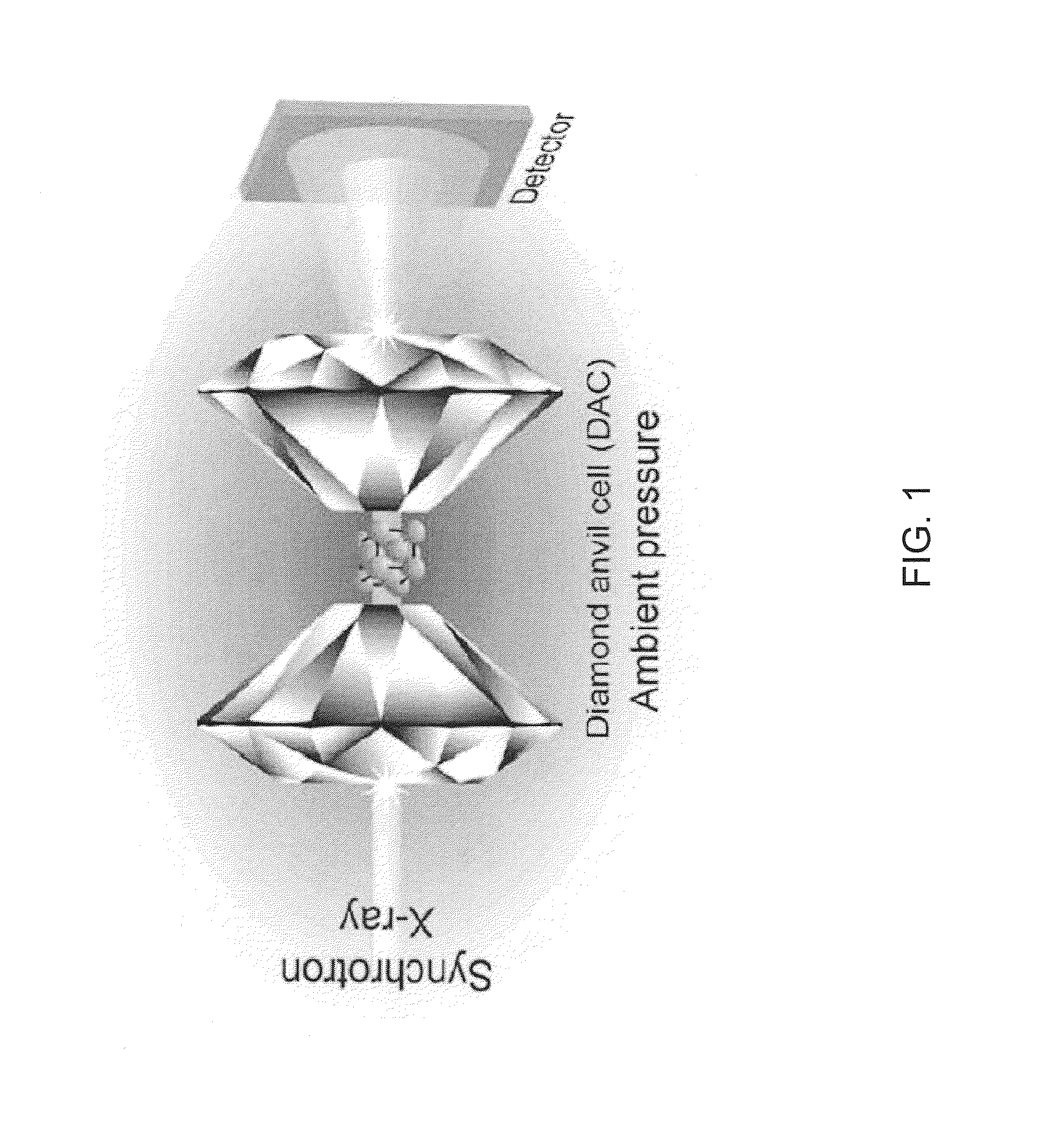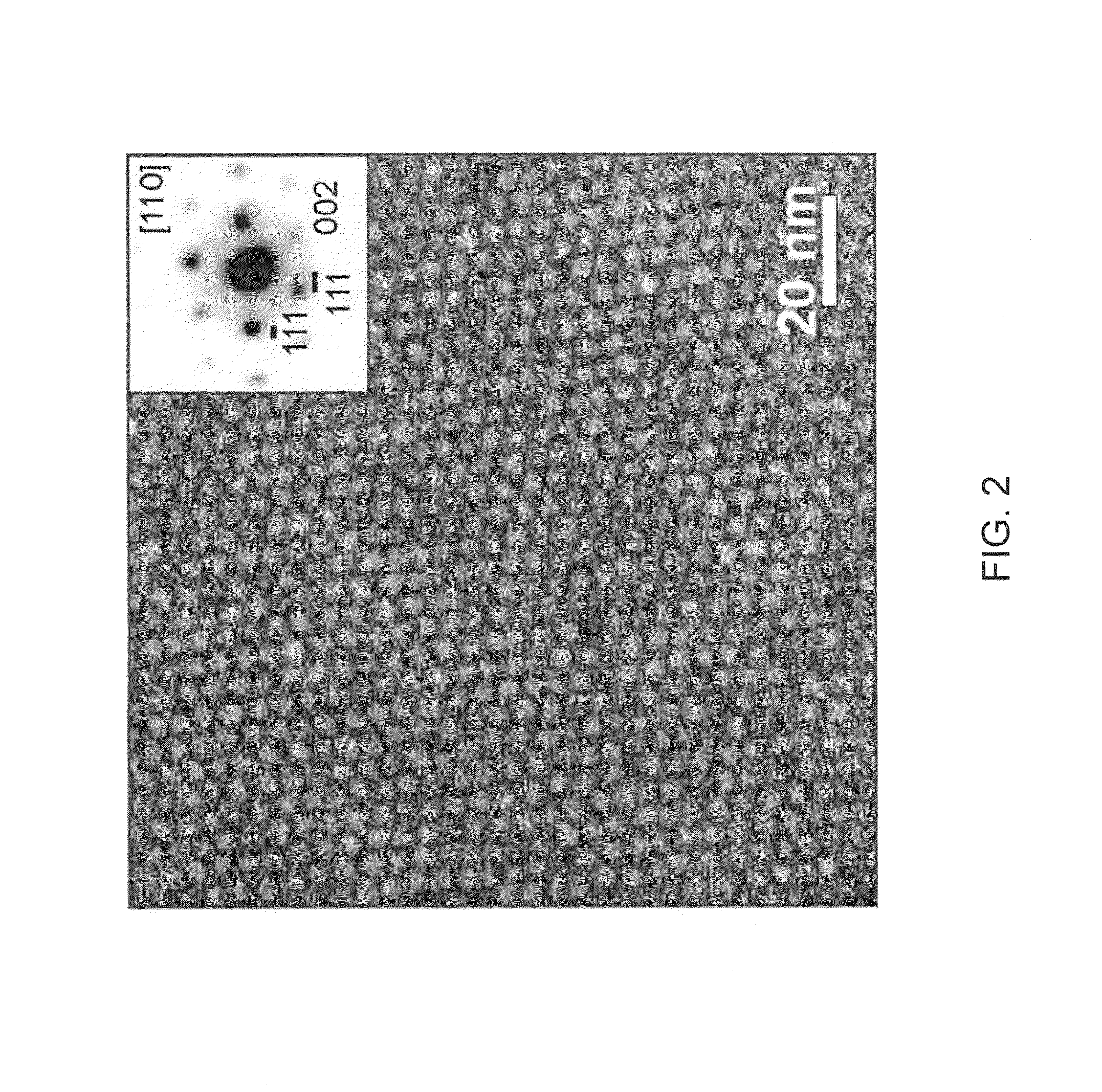Tuning and synthesis of metallic nanostructures by mechanical compression
a technology of mechanical compression and nanostructures, which is applied in the direction of transportation and packaging, coatings, chemistry apparatuses and processes, etc., can solve the problems of inability to produce chemically and mechanically stable nanostructures, and achieve the effect of unique robustness for interrogation
- Summary
- Abstract
- Description
- Claims
- Application Information
AI Technical Summary
Benefits of technology
Problems solved by technology
Method used
Image
Examples
Embodiment Construction
[0023]The present invention is directed to an external pressure-induced engineering pathway to convert three-dimensional (3D) ordered spherical nanoparticle assemblies to one or two dimensional (1D or 2D) nanostructures and form ultrahigh density ordered nanostructures. A diamond anvil cell (DAC) can be used to mechanically compress the nanoparticle assemblies. A DAC consists of two opposing diamonds with a sample compressed between the culets. Pressure can be monitored using a reference material, such as ruby fluorescence, whose behavior under pressure is known. The uniaxial pressure supplied by the DAC may be transformed into uniform hydrostatic pressure using a pressure transmitting medium. The pressure-transmitting medium is enclosed by a gasket and the two diamond anvils. FIG. 1 is a schematic illustration of a DAC that can be used for mechanical compression of a nanoparticle assembly. The nanoparticle assemblies can be embedded in a polymer (e.g., polystyrene) film as the pres...
PUM
| Property | Measurement | Unit |
|---|---|---|
| Pressure | aaaaa | aaaaa |
| Pressure | aaaaa | aaaaa |
| Metallic bond | aaaaa | aaaaa |
Abstract
Description
Claims
Application Information
 Login to View More
Login to View More - R&D
- Intellectual Property
- Life Sciences
- Materials
- Tech Scout
- Unparalleled Data Quality
- Higher Quality Content
- 60% Fewer Hallucinations
Browse by: Latest US Patents, China's latest patents, Technical Efficacy Thesaurus, Application Domain, Technology Topic, Popular Technical Reports.
© 2025 PatSnap. All rights reserved.Legal|Privacy policy|Modern Slavery Act Transparency Statement|Sitemap|About US| Contact US: help@patsnap.com



